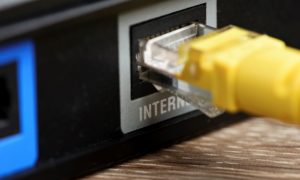Setting up your new physical office can be an exciting time. Surveying your space and imagining the quality work that’s going to get done there fires up the imagination like nothing else. With lots of options and decisions to make, however, the job of planning your new office can quickly pivot from exciting to stressful. One of the underlying questions you’ll have to bear in mind before you get started is whether you want to set up your new office space on a wired or wireless model.
Wired or Wireless Model? Pros and Cons
When planning your set-up, before you get in the weeds with lighting, office furniture, and décor, you’ll want to decide if your new office will be wired or wireless.
Wired Offices
Though wireless technology creates lots of flexibility, wired offices still carry some distinct advantages:
- Wired internet may prove faster than wireless
- Wired networks typically have stronger security options
- Wired set-ups are often less expensive than wireless ones
Of course, in a completely wired office, laptop and tablet users will be out of luck in freedom moving about the office.
Wireless Offices
Just like wired office set-ups, totally wireless offices come with their own benefits:
- Wireless connections increase mobility
- Wireless systems are quicker and easier to install, since there’s no fiddling with connections and cables
- Wireless networks typically present a neater and tidier appearance
- Wireless networks allow for the latest in technology (including laptops and tablets)
Despite all these advantages, an exclusively wireless office isn’t always the best choice.
Benefits of Hybrid Deployment
Back in 2012, experts over at Inc. predicted that “the future of your office is wireless” and that some time in the near distant future, all office would be exclusively wireless.
This wire-free future will be the result of several technologies that exist or are in development, including one called WiGig, a multigigabit wireless docking technology capable of speeds of up to 7Gbps that runs on spectrum in the unlicensed 60 GHz frequency band. These frequencies are great for short-range communications and require line of sight between devices. That means it doesn’t work well between rooms. (Inc.com)
In a way, reading that description is a bit like time traveling.
While the technologies being described above have come and even been surpassed by more powerful and innovative replacements, we still haven’t seen a hard pivot to totally wireless offices.
While there are exceptions, most offices today deploy a hybrid approach to networking and internet access, and there are distinct reasons why this works best.
Naturally, if you choose an exclusively wireless office, you’ll lose all the advantages that come with wired connections; and if you choose to set up an exclusively wired office, the reverse is also true.
By deploying a hybrid set-up, including both wired and wireless connections, however, you’ll allow for the best of both worlds.
- Security and mobility
- Speed and aesthetics
- Affordability and dependability
If you’re looking for current best practices for setting up your new office for success this year, rather than debating between wired and wireless connectivity, you would do best to lean more toward an inclusive hybrid model.
Of course, with a hybrid model, you’ll want to pay special attention to your network security.
That’s where we come in.
SystemsNet Can Help
At SystemsNet, we offer affordable plans to protect you from cybersecurity threats. If you’re interested in adding or tightening security for your business but aren’t sure where to start, we offer free consultations to get you on the right track.
For more information on our premium services, or to discuss setting your new office up for success, please contact us today. We look forward to serving you!

